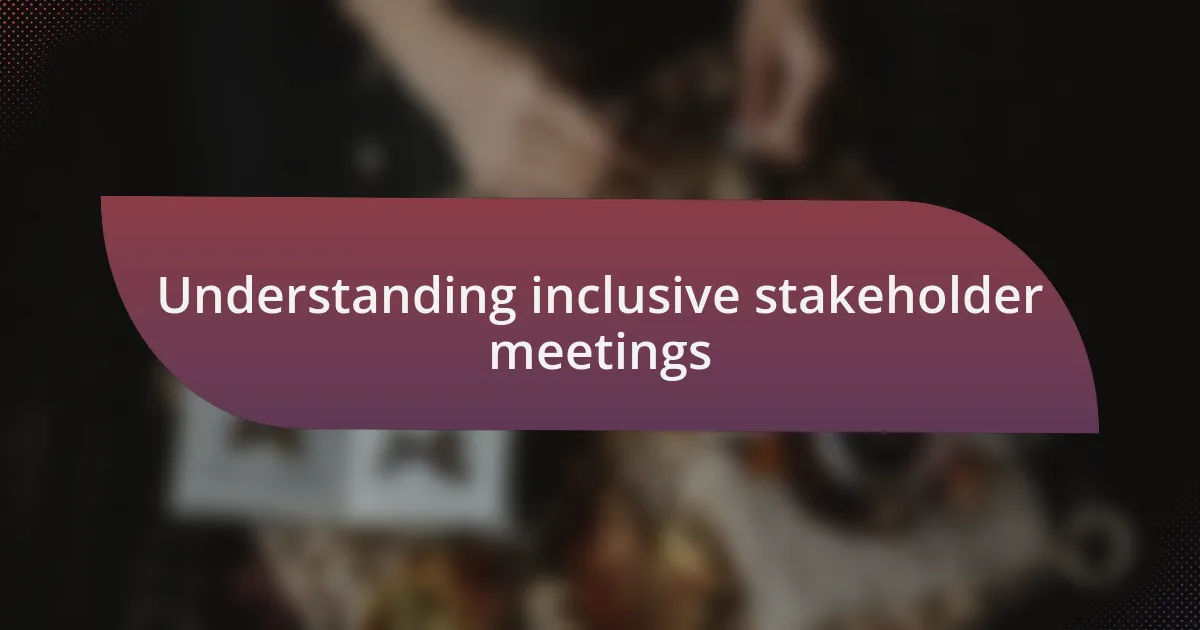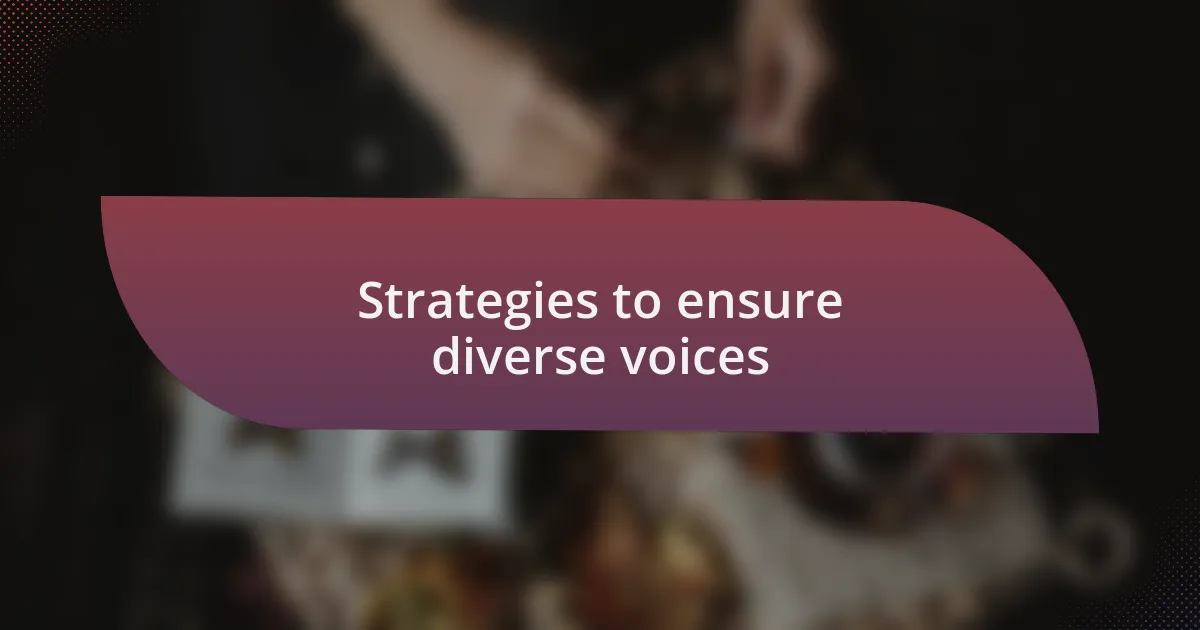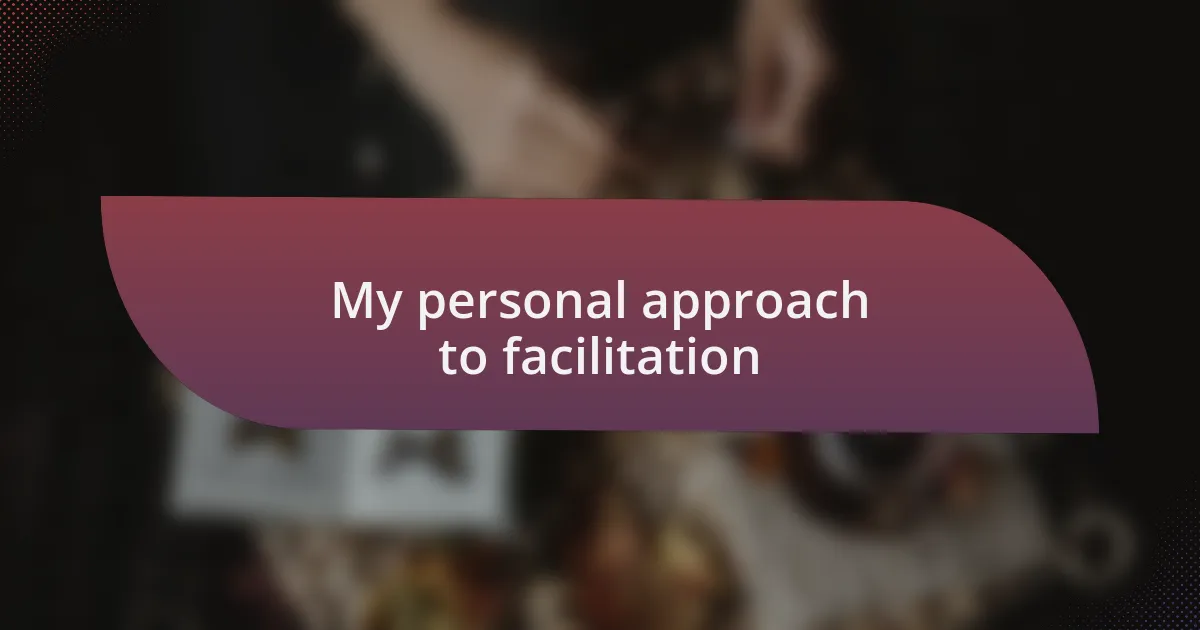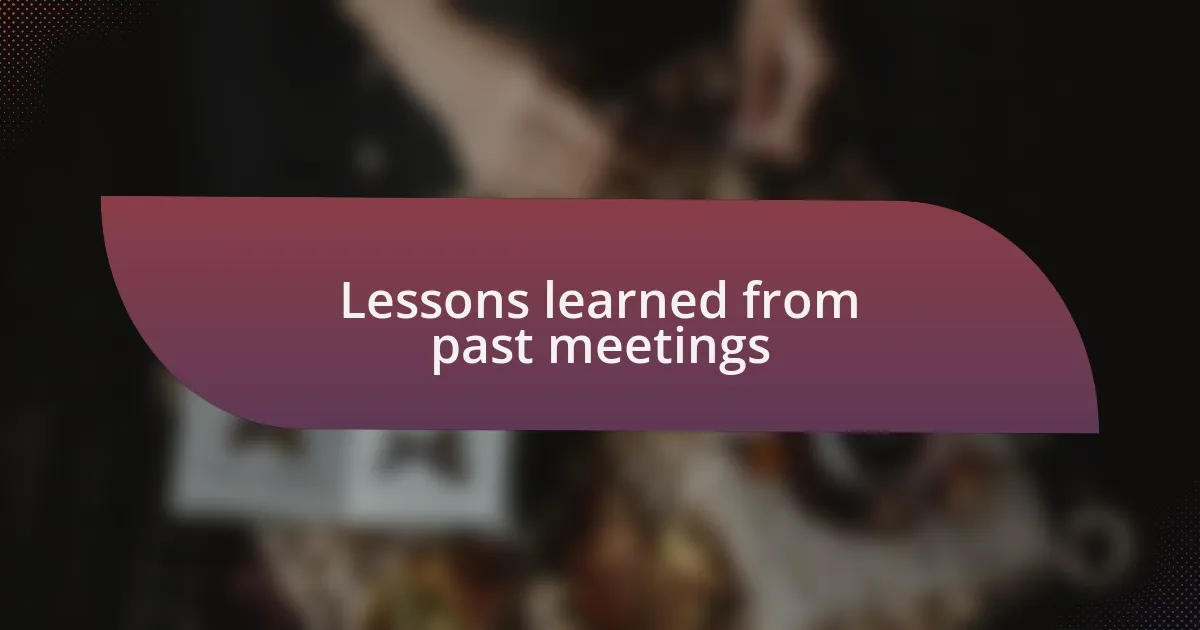Key takeaways:
- Inclusive stakeholder meetings amplify diverse perspectives, fostering an environment where all voices are valued and encouraged to contribute.
- Engaging stakeholders builds trust and relationships, essential for informed decision-making and innovative solutions.
- Effective meeting techniques include setting clear agendas, creating welcoming environments, and utilizing visual aids to enhance participation and understanding.
- Strategies to ensure diverse voices involve actively reaching out to underrepresented groups and prioritizing active listening during discussions.

Understanding inclusive stakeholder meetings
Inclusive stakeholder meetings are more than just a gathering of voices; they’re a space where diverse perspectives come together to shape ideas and policies. I remember attending a meeting where a quiet participant finally shared their viewpoint, and it completely shifted the group’s understanding of the issue at hand. Have you ever considered how a single voice can dramatically alter the course of a conversation?
When I think about inclusive meetings, I realize they’re essential for creating solutions that resonate with all stakeholders. It’s not just about ticking boxes; it’s about fostering an environment where everyone feels valued and empowered to contribute. A few years ago, I facilitated a session with community leaders, and seeing them engage actively was a testament to the power of inclusion. Isn’t it fascinating how much richer discussions become when everyone feels safe to express their ideas?
Furthermore, effective inclusive meetings require thoughtful planning and intentionality in execution. Wait times seem less daunting when participants know their opinions are sought after. During a recent policy discussion, I made it a point to create breakout groups to allow quieter individuals a chance to share their insights—what a difference it made! How can we ensure everyone is truly heard in our meetings?

Importance of stakeholder engagement
Stakeholder engagement is crucial for informed decision-making and developing effective policies. I recall a project where local business owners were initially skeptical about our initiative. By inviting them to share their concerns and suggestions, we not only eased their apprehensions but also gained valuable insights that shaped our approach significantly. How often do we overlook the wisdom of those directly impacted by our policies?
Moreover, engaging stakeholders fosters trust and builds relationships that are essential for long-term success. I experienced this firsthand during a collaborative workshop, where community members expressed their disappointments about past policies. Through open dialogues, we were able to rebuild their trust and reinvigorate their faith in the process. Have you ever felt the difference that a simple conversation can make in bridging gaps?
Lastly, stakeholder engagement paves the way for innovative solutions that might not surface in traditional settings. When I introduced anonymous feedback tools at one of my sessions, the surge of creative ideas took me by surprise. It made me think about how often we might stifle innovation by not providing the right platforms for expression. Isn’t it interesting how the most groundbreaking ideas can emerge when people feel secure to think outside the box?

Techniques for effective meetings
When it comes to running effective meetings, setting a clear agenda is non-negotiable. In my experience, distributing an agenda ahead of time not only helps participants prepare but also allows them to contribute more meaningfully. I once implemented this practice in a session and noticed a significant improvement—the discussion flowed seamlessly, and everyone felt empowered to share their input. Have you ever attended a meeting where the direction felt aimless? It’s often frustrating and counterproductive.
Another technique I find invaluable is creating a welcoming environment where all voices are encouraged. I vividly remember a meeting where some participants hesitated to share their views, while a few outspoken individuals dominated the conversation. By actively inviting quieter members to voice their thoughts, I noticed fresh perspectives emerging. It’s interesting how a simple question, like “What do you think?” can shift the dynamics and make people feel included. Have you thought about how this impacts the quality of your discussions?
Finally, incorporating visual aids can enhance understanding and engagement. I once used slides with visual data to illustrate points during a policy discussion, and the difference was palpable. Participants were more engaged, asking questions and diving deeper into the topic. Visuals not only clarify complex information but also stimulate dialogue. Isn’t it remarkable how seeing information visually can spark new ideas and fuel productive conversations?

Tools for inclusive participation
When thinking about inclusive participation, one effective tool I’ve come to rely on is the use of digital platforms for remote engagement. During one project, I employed an online polling tool to gather real-time feedback in a stakeholder meeting. The immediate results empowered participants to share their opinions more freely, which transformed the atmosphere from hesitation to vibrant involvement. Have you ever noticed how technology can break down barriers in traditional settings?
Another tool I value is the implementation of small group discussions or breakout sessions. I facilitated a workshop where we divided participants into smaller groups to tackle specific issues. This arrangement allowed quieter individuals to share their insights without the pressure of a larger audience. I observed that new ideas emerged organically, reinforcing my belief in the power of smaller, more intimate conversations. Have you experienced the magic that comes from small group dynamics?
Additionally, providing multiple channels for feedback is crucial in fostering inclusivity. In one instance, I offered anonymous feedback forms alongside open discussion formats. Participants who might otherwise withhold their input felt more comfortable expressing their thoughts. This approach not only enriched the feedback but also highlighted a range of perspectives that would have otherwise gone unvoiced. Isn’t it fascinating how anonymity can empower voices that typically remain in the shadows?

Strategies to ensure diverse voices
To ensure diverse voices in stakeholder meetings, I’ve found it invaluable to actively reach out to underrepresented groups beforehand. During a recent initiative, I made a concerted effort to invite individuals from local community organizations. Their unique perspectives not only enriched the conversation but also fostered a deeper sense of belonging among participants. Have you thought about how a simple invitation can pave the way for more inclusive dialogue?
Another strategy I employ is the use of visual aids that reflect the diversity of the group. I recall a meeting where I incorporated photos and stories from various cultural backgrounds. This not only made the discussion more relatable but underscored the importance of each voice present. It’s amazing how visuals can create a shared understanding and enhance empathy among participants, don’t you think?
Lastly, I always prioritize active listening during discussions. I remember a moment when I paused after each speaker and reflected back their ideas, ensuring they felt heard and valued. This practice not only validated their contributions but also encouraged others to share, leading to a richer exchange of ideas. How often do we overlook the power of simply acknowledging someone’s thoughts in our conversations?

My personal approach to facilitation
My approach to facilitation centers around creating an environment where everyone feels comfortable to speak up. I recall a particularly challenging meeting where tensions were high, and participants seemed hesitant to share their thoughts. I decided to open the floor by sharing my own vulnerability—admitting that I also had doubts about the project. This simple act helped to dissolve barriers and encouraged others to voice their uncertainties, leading to a more open discussion.
Another crucial aspect of my facilitation style is adaptability. Once, during a workshop, I noticed that my planned agenda wasn’t resonating with the group. Instead of sticking rigidly to my script, I chose to pivot and let the conversation flow in a direction that felt more organic to the participants. This flexibility not only improved engagement but also demonstrated that their input was valued over a predetermined agenda. How often do we find ourselves trapped in our own plans, missing out on richer insights because we resist change?
Ultimately, I believe in the strength of connection and rapport. I always strive to build personal relationships with participants ahead of time. For instance, I once spent an afternoon at a community center getting to know a few stakeholders individually. This effort made a world of difference in our subsequent meeting, as those individuals felt more at ease and eager to contribute. Isn’t it interesting how a little investment in relationships can transform the dynamics of a group?

Lessons learned from past meetings
Reflecting on past meetings, one lesson that stands out is the importance of setting clear expectations. In one instance, a stakeholder meeting devolved into confusion because not everyone understood the meeting’s objectives. This experience reminded me of the significance of starting meetings with a brief outline of what we aim to achieve. Have you ever walked into a discussion unsure of its purpose? I have, and it can feel disorienting. Setting clear goals ensures everyone is on the same page and fosters more productive dialogue.
Another insight revolves around the value of encouraging diverse voices. In a previous meeting with stakeholders from varying backgrounds, I made it a point to create space for quieter participants, ensuring they had a chance to share their perspectives. The richness of ideas that emerged was a revelation—like discovering a new dimension to a familiar landscape. When was the last time you actively listened to someone whose viewpoint differed from yours? I realized that embracing diverse opinions not only enhances creativity but also builds stronger buy-in for decisions made during the meeting.
One particular meeting taught me to engage in active listening. I remember a participant who was visibly frustrated, struggling to articulate their concerns. Instead of moving on, I took the time to truly listen and validate their feelings. This moment turned what could have been a conflict into a collaborative problem-solving session. Aren’t we all looking for our voices to be heard? Acknowledging emotions in meetings can transform dynamics and foster a sense of community that is vital for effective collaboration.